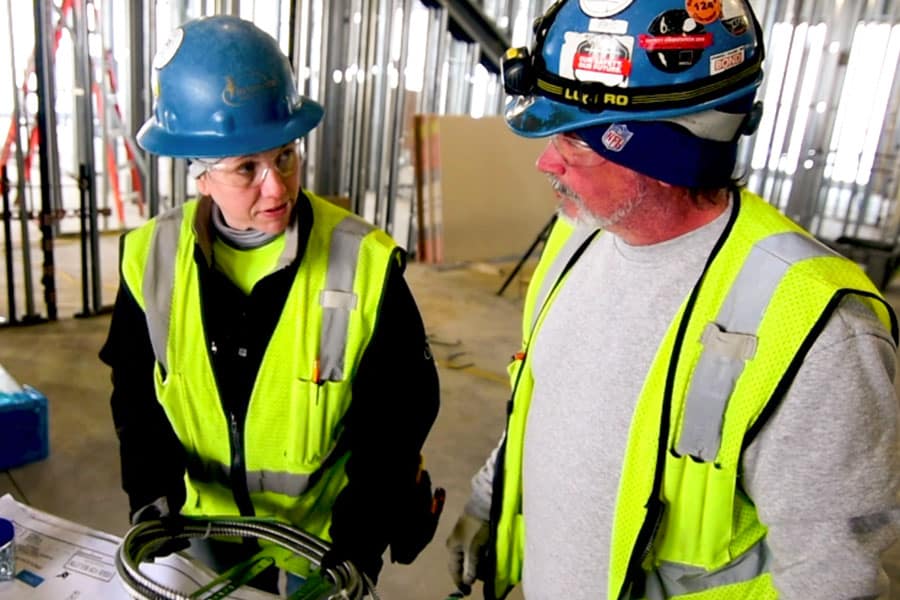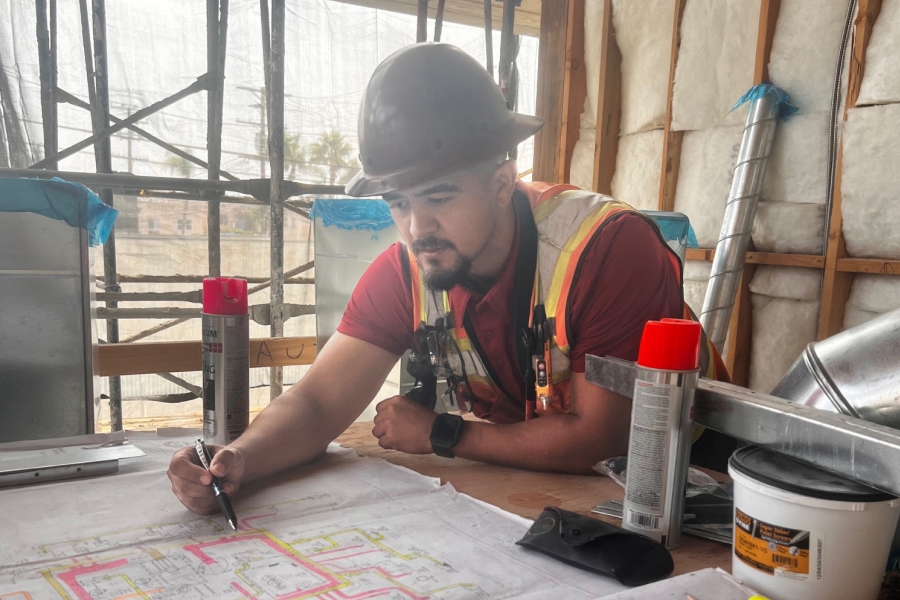Interstate Electrical is a regional, family-owned commercial electrical contractor with offices in all six New England states. Founded in 1966 by Pat Alibrandi and currently led by his son, Jim Alibrandi, Interstate aspires to be a different kind of electrical contracting company—one where individual talent and determination is encouraged and rewarded, and one that is equally customer-centric.
“We want to be seen as ‘not your father’s electrical company,’” said Bob Sanford, Interstate Electrical’s lead sales engineer. “Our innovative vision is to use technology to support our operations and the people in the field, while increasing the value we provide to our customers.”
From a value-add services standpoint, Interstate Electrical tackles everything from large projects to fit-ups for startups, using design-build and design-assist services with an in-house team of professional engineers and electrical designers. New builds, ground-up restorations and building information modeling (BIM) coordination are all hallmarks of the firm’s duties, along with fire alarm installation, testing and monitoring, arc flash hazard analysis, infrared testing, network data cabling, and process and building controls installations.
“Around 2014, we embarked on a lean journey,” said Ed Gould, the company’s general project superintendent. “We realized that if we were going to continue to grow and be successful, we had to do our best to streamline the processes that we had, and we did that by creating a value stream map of the project delivery from the point of award to project completion.”
The firm had previously been doing prefabrication at a small level for the past 20 years, but after dedicating itself to lean processes and creating the value stream map, prefabrication and preconstruction became integral parts of its project delivery model.
Assessing the challenges
With the firm fully embracing lean methodology, Interstate Electrical could no longer rely on paper drawings, emails and spreadsheets for project delivery.
“We think of our project delivery as twofold: we have the feet on the street—the people in the field, the technicians, the electricians who are actually building and installing the pieces—and then we have the prefab shop that’s supplying them with pre-built assemblies and pre-tested components,” Sanford said.
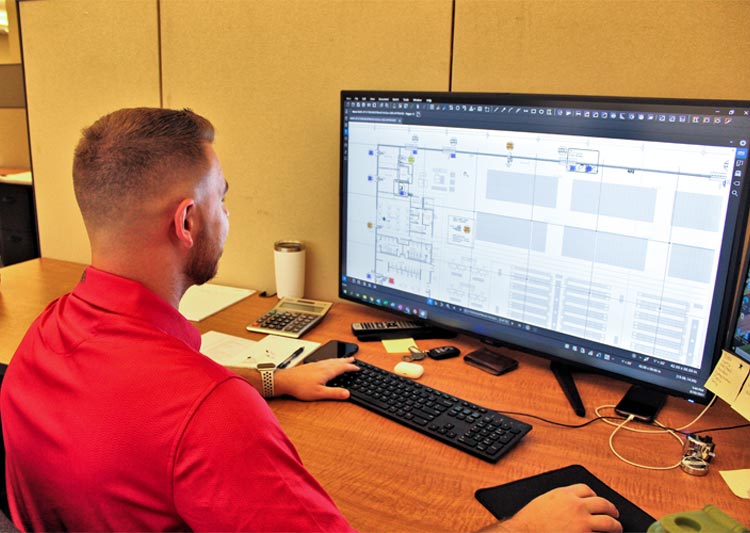
With many internal and external stakeholders all depending on timely, accurate, yet user-friendly information, going lean created a need to streamline and maximize construction software technology to establish the informational flow necessary for lean success.
“We would typically get a bid invite from our general contractors, which would be the drawing set sent over in a PDF form,” said Sean Coleman, Interstate Electrical project estimator. “Then we would take those PDF forms to a secondary software and upload each one of those PDFs into the software; some of these packages come with 60 drawings in each of them, so that upload time could be anywhere between 10 to 30 minutes on some of the larger projects. We would typically do all our counting inside of that software, and then we would take the counts out of that software, put them into an Excel sheet, and send those counts off to our vendors for pricing. And then we would do our takeoff in yet another software.”
As project superintendent, Gould would take the engineer’s drawings and specs from the job and transfer the information to all the layouts via hand-marked-up paper drawings.
“There are multiple layers, and I’m using pen, paper and/or highlighters with a scanner, so every time I’d have to add another layer on to a drawing, I’d have to scan that drawing over and over again, making it harder to read each time to the point where the guys on the site couldn’t even read room numbers anymore,” Gould said. As-built drawings also could not be accurately scaled, Gould added, leaving time-consuming manual verifications and room for error.
Cut sheets faced a similar problem, with no standardization options for Gould to accurately send information to the prefab team. “I used to literally cut and paste images with scissors, put them in the copy machine and zoom in and out, and then tape them onto a page,” Gould said.
The lack of standardization options had an impact on the firm’s preconstruction agility, which is a vital component for lean construction. This also affected manufacturing and install capabilities due to the potential for miscommunication.
“The field would get reworked CAD drawings, not my original markups, and they might be missing things or things were not drawn as I had initially drawn them,” Gould said.
Those inaccuracies would result in confusion at best, and costly rework at the point of install at worst. With no way to create a mockup or template, the resulting manual change orders would become tedious and time-consuming paper-based markups for the field and the manufacturing warehouse to separately verify and document.
Revu implementation and workflow improvements
Interstate Electrical chose to augment existing software solutions with Bluebeam Revu to digitize and simplify these workflows while aligning and disseminating accurate project information across its teams. Bluebeam Studio Sessions, Revu’s real-time collaboration capability, would also be used to keep the Interstate Electrical design-build engineering group, design-assist group, estimating group, prefab operation center, as well as project managers and field installers all on the same page during their respective paths toward project success.
Interstate Electrical also uses its own custom Tool palette within Revu to standardize its own markups, with the added ability to also get counts without having to use additional pieces of software. In addition to Studio and Tool Chest, Revu’s Overlay feature is also a crucial part of the company’s digital workflow. Going digital with Revu has also improved the firm’s estimation, thanks not only to the Studio Sessions for vendors but also the accuracy of measurements within the digital environment.
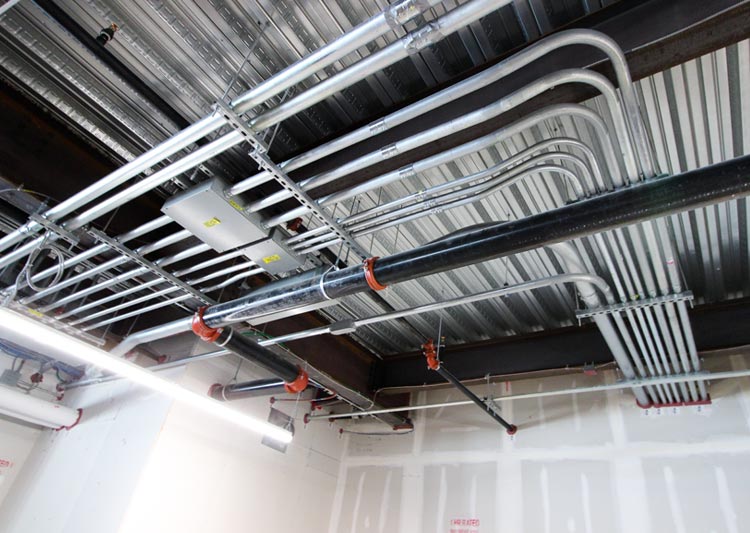
“When we’re doing it with Revu it’s more accurate,” Gould said. “We know the drawing will be to scale if we set the drawing to scale; we don’t have to worry about the physical roller scale pressing the wrong button or getting the wrong distance. We can verify what that length was if it changed; we could easily update it by going into Revu and adjusting the length.”
Achieving lean success with Revu
In less than a year’s time since Interstate Electrical has adopted Bluebeam Revu, the results have shown dramatic increases in efficiency, collaboration and accuracy.
“We are proud to call ourselves a lean company now, and for us, lean means flow; it’s all about the flow of quality information to the people who need it, flow of materials from distributor/manufacturer to our prefabrication facility, and then to the on-site installs,” Gould said.
Bidding and estimation workflows in Revu are already showing strong results and transformational value for Interstate Electrical.
“Bluebeam saves so much time for us,” Coleman said. “I’ve never had a PDF program that would allow me to create counts. You’d always have to put symbols on a drawing and then convert it to Excel, so being able to do that in one platform allows us to reduce clicks and really improves the process throughout the whole department.”
Bluebeam Revu is also making a positive impact on the company’s prefab and field teams. Gould and his teams have used Revu to achieve that informational flow while minimizing risk by standardizing markups, templates and drawings and sharing them by using real-time collaboration in Studio.
“We’ve eliminated that middleman, the CAD detailer, who is now free to focus more on the value of that role when we need them,” Gould said. “Plus, if there is an issue, they can go directly to me and we can open up my comments and figure out how to correct the issue because the information is right there.”
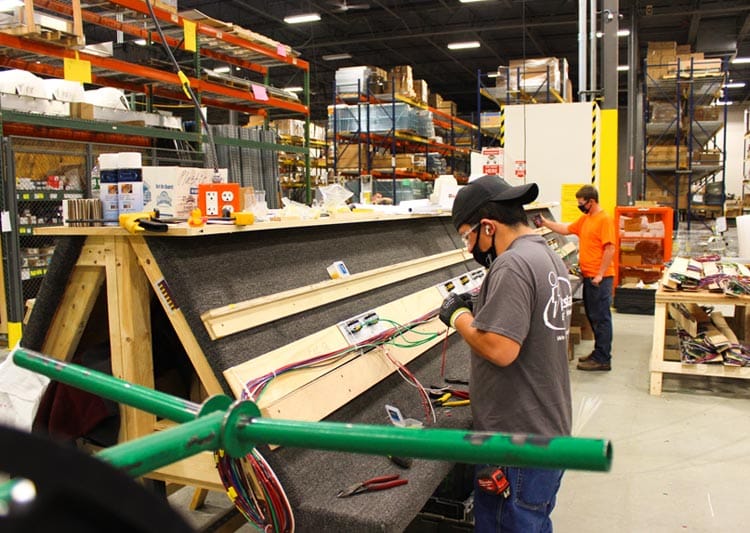
Standardization also improved project delivery with Revu, as the Interstate Electrical team leveraged the Tool Chest, Measurements and Legends features.
“We’re just trying to create standardized templates and standardized assemblies that we can use everywhere for jobs to save time and straighten out that manpower crunch that we always seem to end up in,” Gould said. “The Tool Chest feature allows me to create color-coded and standard markups that I can use on multiple jobs. Plus, it automatically counts my quantities into the Legends feature in Revu, so I no longer have to count the drawings when I’m done. That solved a lot of problems and time for us.”
Interstate Electrical’s focus on finding and using the right technology for project execution and lean construction methodology also allowed the firm to conduct socially distanced manufacturing, enabling it to continue working on projects during the COVID-19 pandemic.
“I was just talking to another project manager on a very large-scale project, and there were other electrical contractors who were initially involved but they backed away because the manpower requirement was so large,” Sanford said. “We were able to finish that job on time with half the manpower because we had the ability to split our workforce between prefab and the field.”
The company continues its commitment to optimizing lean and using digital construction at every opportunity.
“Continuous improvement is part of lean, and going digital with Revu allows us to improve communication and improve informational flow, all while improving our quality by removing unnecessary steps,” said Scott Dockendorff, Interstate Electrical’s marketing manager. “Bluebeam Revu has absolutely helped us move forward in our lean journey.”

